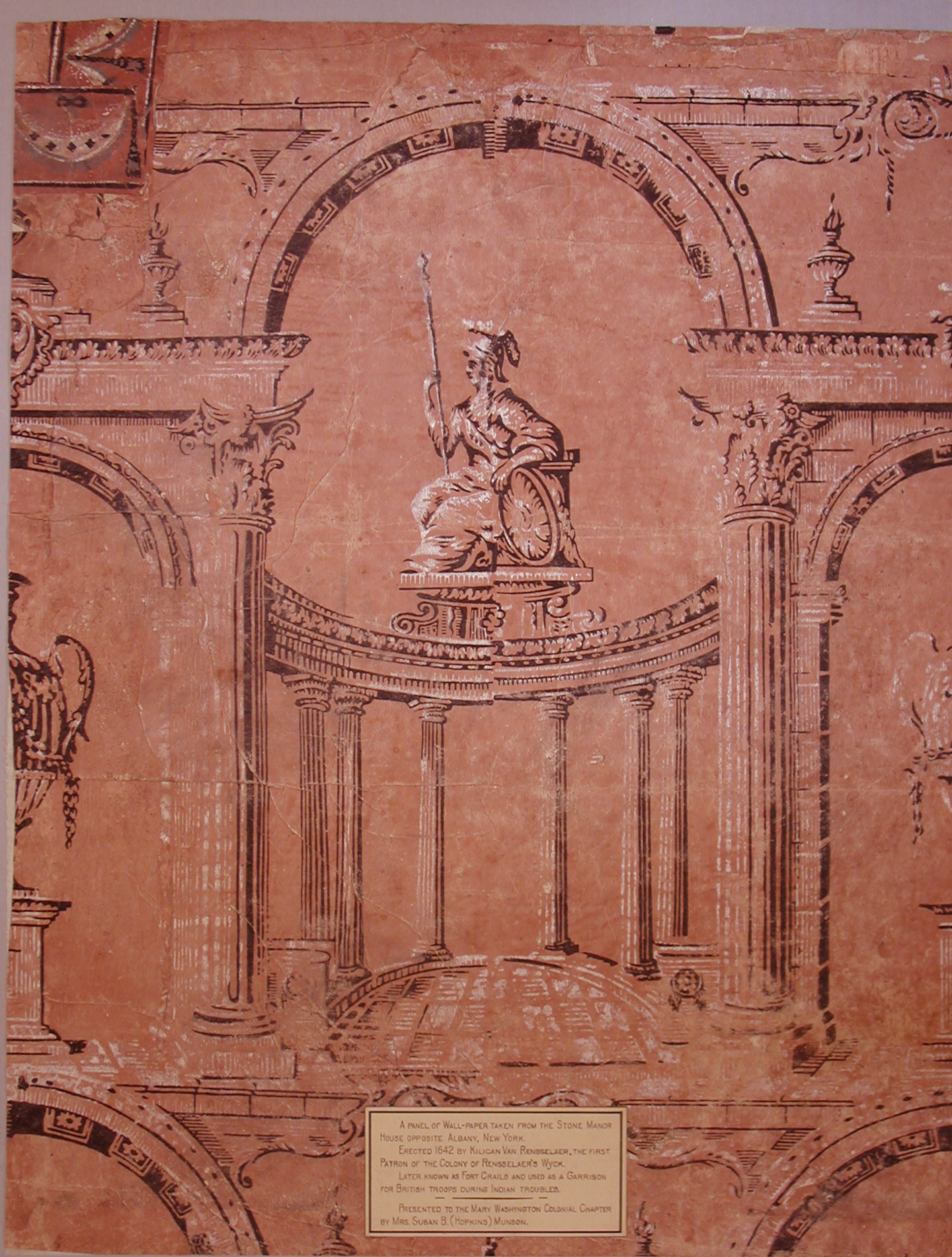The lovely lady featured on this late 18th century panel of wallpaper is Britannia: the United Kingdom personified as a classical deity (think the British version of Lady Liberty). The neo-classical “pillar and arch” design that frames her is a distinctly English style of wallcovering, and she was without-a-doubt manufactured across the pond. Despite her pronounced English heritage, Britannia has spent most of her life in a home that played a unique role in the history of American patriotism. It’s purported that the famous song, Yankee Doodle, was first penned in the upstate New York home, known as Fort Crailo, where Britannia originally reigned as a sidewall.
Block printed in black and white on a terra-cotta ground color, Britannia proved to be a popular wallcovering in the nascent United States. Within the Cooper Hewitt collections is not only an example of this same pattern printed in a blue-gray colorway, but also an American-manufactured knock off (the same design, only printed in reverse) that dates to the 1790s. This particular panel boasts a small piece of border on its upper left corner. The terracotta colored border matches nicely with the sidewall panel, and is possibly the remainder of the original border applied to Britannia back in the 18th century.
Fort Crailo was most likely built c.1705 by Hendrick Van Rensselaer, and according to the label pasted at the bottom of the panel, gets its name from its use as a “garrison for British troops during Indian troubles.” Britannia was probably installed during one of two remodelings that occurred in the home in 1762 and 1783.
Anna Rasche is a student in the History of Decorative Arts & Design graduate Program at the Cooper Hewitt, and is a Master’s Fellow in the Wallcoverings Department
